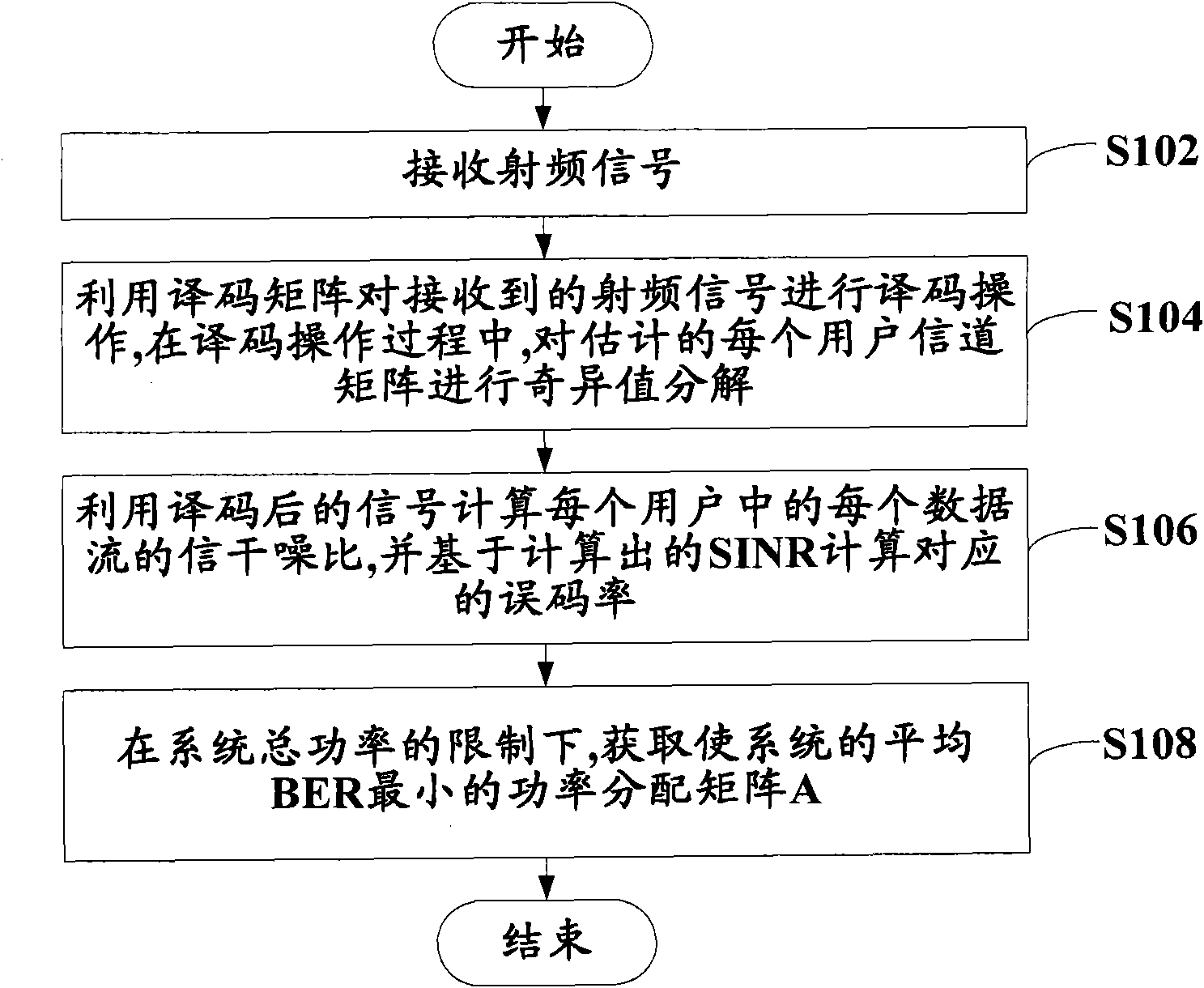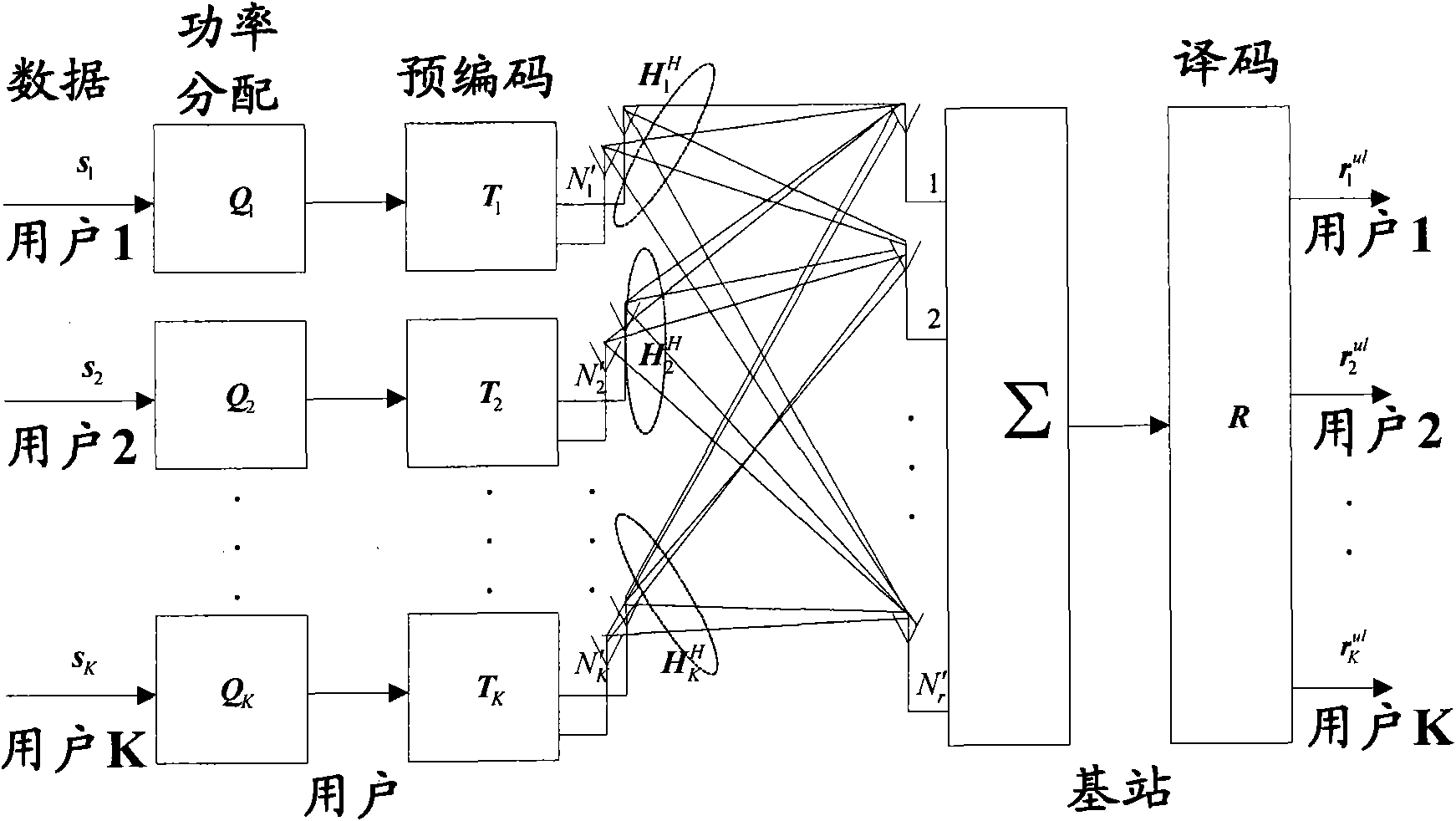Power allocation method and device in multi-user MIMO (Multiple Input Multiple Output) system
A power distribution matrix and multi-user technology, applied in power management, energy-saving ICT, electrical components, etc., can solve problems such as error, system performance degradation, and insufficient consideration of base station noise enhancement
- Summary
- Abstract
- Description
- Claims
- Application Information
AI Technical Summary
Problems solved by technology
Method used
Image
Examples
Embodiment Construction
[0032] The present invention will be described more fully hereinafter with reference to the accompanying drawings, in which exemplary embodiments of the invention are illustrated. The exemplary embodiments of the present invention and their descriptions are used to explain the present invention, but do not constitute an improper limitation of the present invention.
[0033] The purpose of the present invention is to minimize the BER of the system. The MMSE reverse water injection power allocation method based on the BD precoding method can be directly adopted, but the power allocation method is difficult to implement due to the design limitation and complexity of the BD method itself. There are two power allocation methods for SVD-assisted multi-user MIMO uplink and downlink transmission. The downlink uses the EPA power allocation method, ignoring the BER performance gap of each sub-channel, and does not make full use of the transmission power; the uplink uses the MSNR power a...
PUM
 Login to View More
Login to View More Abstract
Description
Claims
Application Information
 Login to View More
Login to View More - R&D
- Intellectual Property
- Life Sciences
- Materials
- Tech Scout
- Unparalleled Data Quality
- Higher Quality Content
- 60% Fewer Hallucinations
Browse by: Latest US Patents, China's latest patents, Technical Efficacy Thesaurus, Application Domain, Technology Topic, Popular Technical Reports.
© 2025 PatSnap. All rights reserved.Legal|Privacy policy|Modern Slavery Act Transparency Statement|Sitemap|About US| Contact US: help@patsnap.com



